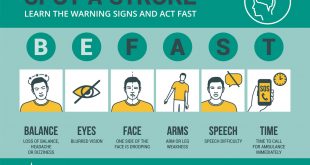By Jeffrey Edwards, MD, RPVI


Peripheral Artery Disease
Peripheral artery disease, also called PAD, occurs when plaque builds up in the arteries of the extremities (arms and legs). This can manifest in several ways, and in its mild form may result in claudication. This may result in pain with walking, or in more severe cases can result in non-healing wounds or amputation. PAD is more common in men and is estimated to impact more than 10% of the US male population over the age of 70. Major risk factors include smoking, high blood pressure, high cholesterol, and diabetes. Screening for PAD is done with an ankle-brachial index (ABI) test, which involves checking the pressure in your legs and arms, and if there is a decrease in the legs then an ultrasound test can identify underlying plaque.
Carotid Stenosis
Stroke is a leading cause of death and long-term disability in men. Carotid stenosis occurs when plaque builds up in the carotid arteries, which supply the majority of bloodflow to the brain. It is estimated that carotid stenosis is responsible for up to 30% of ischemic (i.e., non-bleeding) strokes. Risk factors include high blood pressure, smoking, being overweight, high cholesterol. Treatments for carotid stenosis include surgery to remove plaque or stent placement to relieve the stenosis. These are recommended when a stroke or transient ischemic attack (TIA) occurs in relation to a significant carotid plaque. In severe carotid stenosis, your physician may recommend preventative treatment in the absence of symptoms. In either case, carotid plaque can signal an increased risk of other cardiovascular events such a heart attack and you should be on antiplatelet and cholesterol-lowering medications. Testing for carotid stenosis is easily performed with carotid duplex ultrasound, a non-invasive test which can be performed in your vascular surgeon’s office. Ask your physician if you would benefit from a carotid ultrasound.
Aortic Aneurysm
Abdominal aortic aneurysms (AAA) occur when the aorta, the largest blood vessel in the body, becomes enlarged. This occurs most often due to weakness in the vessel wall. AAA occur more often in men and risk factors include advanced age, smoking, family history, high cholesterol, high blood pressure. Treatment is indicated when an AAA reaches a diameter of 5.5cm in men and 5.0cm in women. This is most often performed in an endovascular aneurysm repair (EVAR) procedure, in which a vascular surgeon repairs your aneurysm using a covered stent. Not everyone is a candidate for a minimally invasive EVAR procedure, in which case open surgery may be recommended. The US Preventative Services Task Force (USPSTF) recommends screening for AAA in all men older than 65 years old who have ever smoked. Screening is also recommended in those who have a family history of aneurysm. Screening is performed with an aortic ultrasound, a test which takes less than an hour and can accurately identify more than 90% of AAA.
Sarasota Vascular Specialists is the tri-county area’s largest practice dedicated solely to the treatment of vascular disease. Ask your physician if you are at risk for vascular disease. Contact Sarasota Vascular Specialists to schedule a brief vascular screening to check for peripheral artery disease, abdominal aortic aneurysm, and carotid stenosis. 15 minutes could save your life.
To schedule your appointment, please call 941-371-6565, or visit veinsandarteries.com to find out more.
Sarasota Vascular Specialists
941-371-6565
veinsandarteries.com
Sarasota
600 N. Cattlemen Road, Sarasota, Florida 34232
 Southwest Florida's Health and Wellness Magazine Health and Wellness Articles
Southwest Florida's Health and Wellness Magazine Health and Wellness Articles

